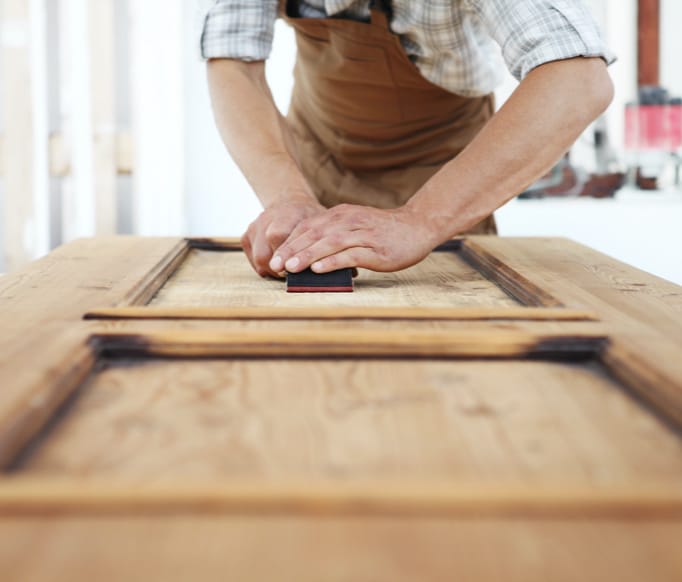

Our graduate restorer (Univ.) & carpenter Philipp Westebbe is a member of the Association of Restorers (VDR). He and the entire team of the Central Conservation Studios Berlin are committed to the highest scientific and ethical standards of the restoration profession. As wood and furniture restorers, however, we are personally committed first and foremost to the preservation of historical cultural assets. Whether it is a medieval wooden altar or a rustic milking stool - at ZRW Berlin we conscientiously follow the standards for our work. Basic restoration texts define these guidelines, which are binding for us.
Binding ethical maxims for the handling of our cultural property form the basis for any restorative action and any professional restoration according to scientific standards. These maxims are laid down in policy papers, charters, guidelines and various agreements at national and international level. These policy documents and basic texts on restoration set out the fundamental ethical
Philipp Westebbe, graduate restorer (Univ.) and owner of our Central Conservation Studios Berlin, is committed to these ethical principles as a member of the Association of Restorers (VDR). Therefore, the entire conservation and restoration work of the ZRW Berlin is also fully oriented towards these principles, first and foremost the code of honour of all restoration disciplines at international level, the Venice Charter.

It is therefore not only the instructions for action in the form of laws enacted at federal or even European level, but above all the guidelines adopted by international consensus that represent a cross-national normative authority and are of significance for action in conservation, restoration and monument preservation. Thus, they are of course also highly binding for our wood and furniture restorers at ZRW Berlin.
The Venice Charter dates from 1964 and is regarded as a central, internationally recognised guideline in the field of monument conservation. Representatives from 17 countries adopted the Charter as a result of the "II International Congress of Architects and Technicians for the Conservation of Monuments". The preservation of the original substance of a cultural asset is defined here as the most important task of monument conservation. Furthermore, the Venice Charter defines the central procedures and values to be applied in conservation and restoration.
In the document "ICOM-CC Definition of profession" from 1984, the basic principles of the profession of a conservator were defined for the first time. It is the result of the collaboration of a team of the International Council of Museums (ICOM-CC).
In 1990, the "Charter for the Protection and Care of the Archaeological Heritage" was published, adopted by the "International Council on monuments and sites". It defines principles for dealing with the archaeological heritage. It also contains maxims for the conservation and preservation of archaeological cultural assets.
Based on the Venice Charter, the "Nara Document on Authenticity" was published after an expert conference in 1994. As the title suggests, it deals with the concept of authenticity in the context of restoration.
"Proposals for a European Strategy on Preventive Conservation" presents the Vantaa document from 2000. The idea of sustainable preventive conservation recorded there has enormous influence on our practice today.
The European Confederation of Conservator-Restorers' Organizations (E.C.C.O.) defined professional guidelines for the conservator profession, requirements for conservator training and ethical principles in the Code of Ethics in 2002 and 2003. In 2013, a comprehensive brochure was published in German. It lists the competences required to take up the profession of conservator-restorer. The profession must serve the well-being of present and future generations by assuming public responsibility for the preservation of cultural property and disseminating the associated knowledge.
E.C.C.O. Professional Guidelines
In 2012, the German-speaking National Committees of ICMOS published this anthology in which 22 international principles and guidelines on heritage conservation that had been published to date were translated into German. In this way, they were made accessible to the German, Swiss, Luxembourgish and Austrian professional community. This compendium of basic restoration texts provides an ideal overview and introduction for those interested.
In 2017, the VDR issued a code of professional conduct. These replaced the Code of Honour of 1986, which until then had been used as the standard for assessing the restorative performance of a VDR member. Among other things, it defines precisely who may use the professional title "restorer".
Professional code of conducter
In 2018, as part of its "European Heritage Strategy for the 21st Century", the Council of Europe published two factsheets that provide Europe-wide definitions of the terms "conservation-restoration" and "preventive conservation".
Council of Europe factsheets Conservation and Preventive Conservation
Published in 2019 by the International Scientific Committee for Theory and Philosophy of Conservation and Restoration ICOMOS, this comprehensive volume with numerous contributions critically examines past practices and ethical issues in conservation and restoration.
There is a whole list of European standards and leaflets that regulate the practice in museums, in monument conservation and in conservation and restoration in a binding way. Here is a short selection of standards relevant to wood and furniture restoration: